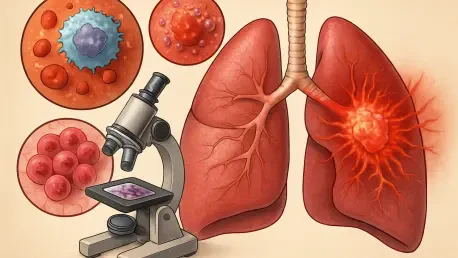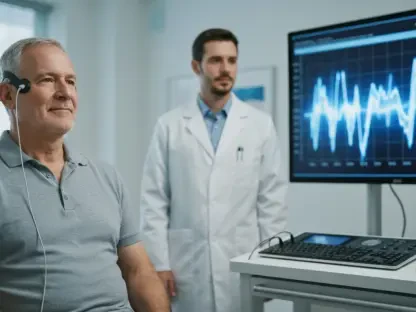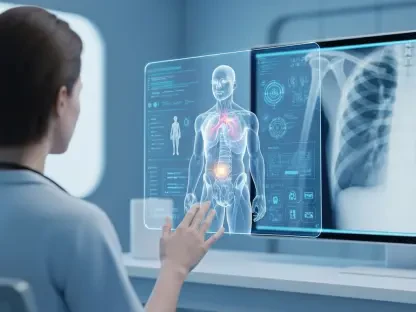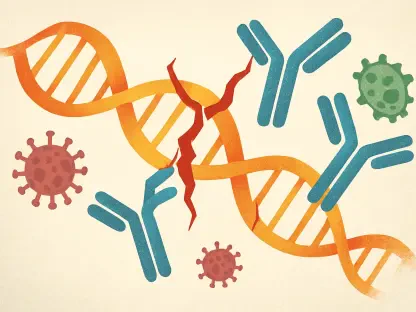I’m thrilled to sit down with Ivan Kairatov, a renowned biopharma expert with extensive experience in research and development, particularly in the realm of cutting-edge technology and innovation in the industry. Today, we’re diving into groundbreaking discoveries about the role of inflammation in the earliest stages of lung cancer, a field where Ivan’s insights are shaping new possibilities for early intervention and patient care. Our conversation explores how inflammation drives cancer development, the innovative tools used to uncover these insights, and the potential for targeting specific pathways to stop cancer before it progresses.
Can you walk us through the major findings of recent research regarding inflammation’s role in the early stages of lung cancer?
Absolutely. Our recent work has shown that inflammation plays a critical role in the very earliest stages of lung cancer. We’ve observed that the initial cells that can give rise to tumors are often located in areas of intense inflammation, surrounded by proinflammatory cells. This suggests that inflammation isn’t just a bystander but a key driver in kicking off the cancer process. By focusing on these early phases, we believe we can intervene before the disease advances.
How did you first come to suspect that inflammation might be such a pivotal factor in lung cancer development?
It started with observing patterns in patient samples where areas of high inflammation consistently overlapped with early cellular changes. We noticed that these inflamed regions had unique characteristics—molecular signals and cell behaviors that hinted at a connection to cancer initiation. This led us to dive deeper, using advanced mapping techniques to confirm that inflammation wasn’t just a reaction but potentially a trigger for those first steps toward malignancy.
What makes the early stages of lung cancer so uniquely tied to inflammation compared to later stages?
In the early stages, inflammation seems to create a kind of fertile ground for cancer to start. The immune environment is hyperactive, with proinflammatory cells and signals like IL-1B dominating the scene. As cancer progresses, other factors—genetic mutations, tumor growth mechanisms—start to take over, and inflammation becomes more of a supporting player. That’s why targeting inflammation early could be a game-changer before those other drivers kick in.
Your research involved creating detailed cellular and molecular maps. Can you describe what that process entails?
Sure, it’s a fascinating but complex process. We essentially build visual representations of lung tissue at a microscopic level, capturing where specific cells are located and how their genes are behaving. We analyzed samples from patients with both precancerous lesions and advanced lung cancer, piecing together a kind of roadmap of disease progression. This helps us see not just what’s happening but where and why at a cellular level.
What kinds of tools or technologies were crucial in developing these high-resolution maps?
We relied heavily on cutting-edge techniques like spatial transcriptomics, which allows us to map gene expression while preserving the spatial context of cells in the tissue. We also used advanced imaging and computational tools to process massive datasets—think millions of data points from just a handful of samples. These technologies let us zoom in on the tiniest details without losing the bigger picture of how cells interact in their natural environment.
Your study also utilized spatial transcriptomics. Can you explain what that is and why it’s so important?
Spatial transcriptomics is a method that lets us see where genes are active within a tissue sample, almost like putting a GPS on gene expression. Traditional methods might tell us which genes are turned on or off, but they lose the context of location. With spatial transcriptomics, we can pinpoint exactly where proinflammatory signals or cancer-related changes are happening, which is crucial for understanding how the disease starts and spreads.
How does this approach help in identifying potential targets for stopping cancer early?
By mapping out gene activity in specific areas, especially in precancerous lesions, we can spot molecular players—like the protein IL-1B—that are driving inflammation and early tumor formation. Seeing these targets in their spatial context helps us understand their role in the disease process and design interventions, such as drugs or therapies, that could block these pathways before cancer fully develops.
Your work focused on precursor lesions—those early growths that might turn into cancer. What stood out about these lesions in your findings?
We found that these precursor lesions often sit in proinflammatory hotspots. They’re surrounded by immune cells and molecular signals that seem to nudge them toward becoming cancerous. What’s striking is how active these areas are compared to normal tissue—there’s a clear shift in cell behavior and gene expression that marks them as potential trouble spots long before a tumor forms.
You’ve noted that proinflammatory areas are especially active in early lung cancer phases. What does that mean for patients in practical terms?
For patients, it means that inflammation could be an early warning sign, even before traditional symptoms or tumors appear on scans. These proinflammatory areas are essentially setting the stage for cancer by altering the local environment—think of it as creating a welcoming space for tumor growth. If we can detect and address this inflammation early, we might be able to stop the process in its tracks.
One of your key findings was targeting a driver called IL-1B to reduce precursor cells. Can you tell us more about what IL-1B is and why it matters?
IL-1B is a protein that acts as a major signal in the inflammatory response. It’s like a loud alarm bell that rallies immune cells and ramps up inflammation. In the context of early lung cancer, we found that IL-1B is highly active in those precursor lesions, contributing to the conditions that allow cancer cells to form. By neutralizing IL-1B, we saw a reduction in these early cancer-prone cells, which is incredibly promising.
What is your forecast for the future of early intervention strategies in lung cancer based on these inflammation findings?
I’m optimistic that we’re on the cusp of a new era in lung cancer prevention. Targeting inflammation, whether alone or alongside therapies like immunotherapy, could become a cornerstone of early intervention. As we refine tools like spatial transcriptomics and develop drugs to block pathways like IL-1B, I believe we’ll see strategies that catch lung cancer before it even starts, dramatically improving outcomes for patients at risk.









